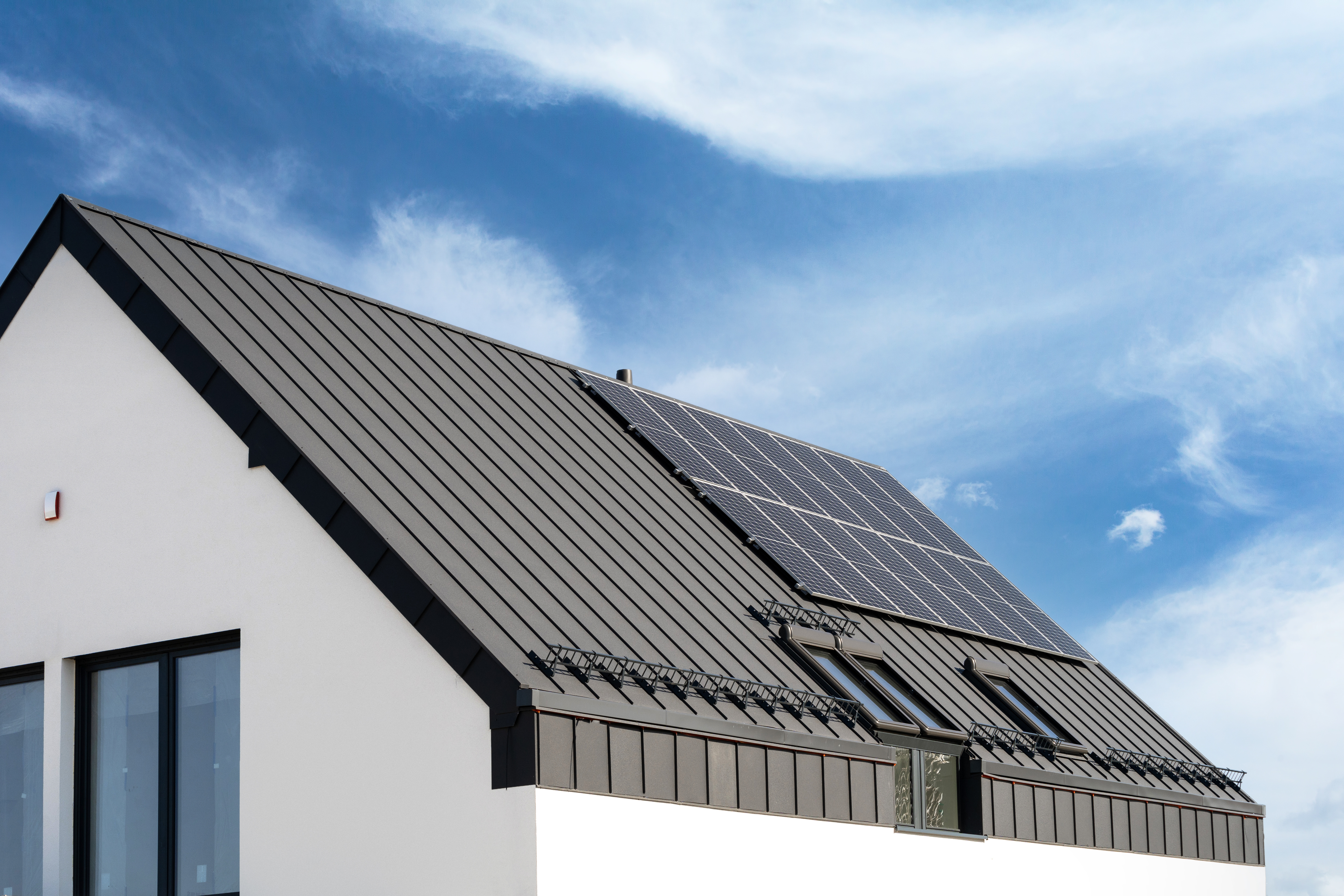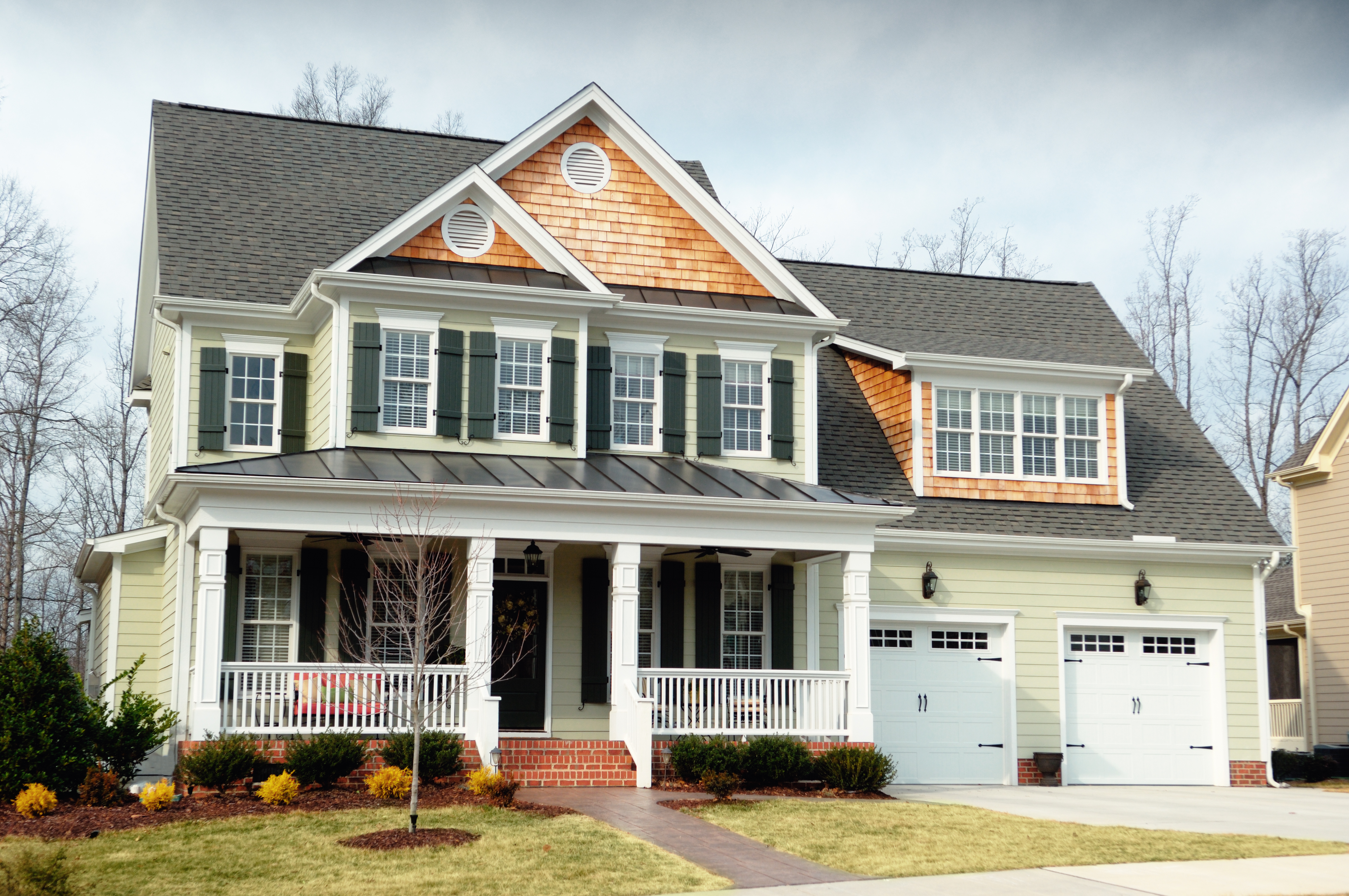
A metal roof can defend your home against Ohio’s varying weather conditions. Learn how much a metal roof costs in Columbus, OH.
Slate roof cost averages $13,348, with most homeowners paying between $4,389 and $22,377. Your price depends on roof size, slate type, labor, and installation complexity.


Slate roofs offer unmatched durability and timeless style, offering a return on investment of up to 70%.
The main cost drivers of slate roof installation include roof size, slate type, and labor rates.
You can expect to pay between $20 and $30 per square foot for installation.
Professional installation costs $75 to $150 per hour, ensuring longevity and reducing future expenses.
Investing in a slate roof can boost home value and curb appeal.
This article was created using automation technology and thoroughly fact-checked and edited by an Angi Editor in accordance with our AI policy.
Installing a slate roof is a significant investment, averaging $13,348 for a standard home, with most projects ranging from $4,389 to $22,377. Homeowners can expect to pay $10 to $30 per square foot for installation, depending on slate type and roof complexity. Understanding these costs helps you plan your roofing project with confidence.
The size of your roof is the single biggest factor in determining slate roof cost. Larger roofs require more materials and labor, directly increasing your total investment. Most residential roofs range from 1,000 to 3,000 square feet, but roof pitch and the number of stories can increase both material needs and installation complexity.
To estimate your roof’s square footage, measure the length and width of each roof plane and multiply them together, then add up each section. Complex shapes or steep pitches may require professional measurement, but this calculation provides a solid starting point for budgeting.
| Roof Size (Sq. Ft.) | Cost Range |
|---|---|
| 1,000 | $10,000–$20,000 |
| 1,500 | $15,000–$30,000 |
| 2,000 | $20,000–$40,000 |
| 2,500 | $25,000–$50,000 |
| 3,000 | $30,000–$60,000 |
The type of slate you choose dramatically affects your slate roof cost. Homeowners can select between natural slate and synthetic (composite) slate. Natural slate is prized for its classic appearance and longevity, but comes at a higher price. Synthetic slate offers a lighter, more affordable alternative with easier installation, though it may not match natural slate’s lifespan.
Within natural slate, grades range from architectural (entry-level) to premium. Higher grades mean more durability and uniformity, but also a higher cost.
Color and finish options, such as rare hues or custom textures, can increase your project price. Imported slate tends to cost more due to shipping and exclusivity, while domestic slate is often more affordable. Specialty shapes, patterns, or custom designs also add to your total cost.
Each type has its own set of pros and cons, so weigh your options carefully to find the best fit for your home and budget.
| Slate Type | Average Cost per Sq. Ft. | Pros | Cons |
|---|---|---|---|
| Natural slate | $15–$30 | Long lifespan, authentic appearance | Heavy, costly, labor-intensive |
| Synthetic slate | $10–$15 | Lighter, less expensive, easier to install | Shorter lifespan, less authentic look |
| Architectural grade | $15–$20 | Affordable, good durability | Less uniform, shorter lifespan |
| Premium grade | $25–$30 | Superior durability, consistent color | Most expensive |
| Imported slate | $20–$35 | Unique colors, exclusive look | High shipping costs |
| Domestic slate | $15–$25 | Easier sourcing, lower shipping costs | Fewer color options |
Where you live can have a big impact on the cost of a slate roof. Labor rates, material availability, and local shipping fees all play a role.
Urban areas often have higher prices due to demand and overhead, while rural areas might offer savings but could face increased material delivery costs. For example, slate roof installation tends to cost more in the Northeast and West Coast, while southern and midwestern locations may see lower prices.
Local building codes and climate conditions, such as snow load requirements, may also influence installation complexity and price. Always factor in local conditions when budgeting your project.
Several factors influence the total cost of installing a slate roof. Understanding these details helps you make informed decisions and avoid surprises.
Slate roofs require specialized skills, so most installations are handled by licensed roofers or slate specialists. Labor rates range from $75 to $150 per hour or $5 to $12 per square foot, depending on experience and location.
Small projects may incur minimum labor fees, increasing the per-square-foot price. Complex roofs with steep pitches, valleys, dormers, or chimneys take more time and skill, raising labor costs. Highly experienced contractors may charge more, but their expertise can ensure a longer-lasting, high-quality installation.
Most municipalities require permits for slate roof installation. Permit costs vary widely based on region, ranging from $200 to $1,000. Some areas require additional inspections, which may come with their own fees. Permit and roof inspection costs should be factored into your overall budget.
Installing a slate roof often means upgrading underlayment, waterproofing membranes, and flashing to match slate’s lifespan. Specialty fasteners and hardware, ridge caps, valleys, and custom trim pieces are also necessary.
If your home’s structure needs reinforcement to support the weight of natural slate, framing upgrades can add several thousand dollars to your project. Features like skylights, solar panels, or other roof penetrations increase both material and labor costs.
Several factors can impact the cost of slate roof installation, including:
Roof complexity, such as multiple slopes, hips, valleys, or architectural details, increases labor and material needs.
Steep or multi-story homes can be more difficult and costly to access.
Site preparation, including removal of the old roof, disposal, and material delivery logistics, affects your bottom line.
Post-construction cleanup and debris removal may add to your final invoice.
Custom designs or working with an architect for unique slate roof projects can also increase costs.
Required inspections during or after installation may result in additional fees.
Beyond installation, several other costs can affect the total slate roof cost over time.
Manufacturer warranties on slate tiles often last 50 years or more, covering defects in materials. Installer warranties may cover workmanship for 10 to 20 years. Extended warranties add peace of mind but may increase upfront costs by several hundred to a few thousand dollars.
Annual maintenance for slate roofs includes inspections, minor repairs, cleaning, moss removal, and gutter maintenance. Expect to spend $300 to $800 per year. Replacing individual broken or slipped tiles can cost $50 to $200 per tile. Preventative maintenance, like clearing debris and checking flashing, helps extend your roof’s lifespan.
Sales tax on slate roofing materials and labor varies by state, ranging from 4% to 10%. If a new slate roof increases your property value, you could see higher property taxes—check with your local tax assessor for details.
Notify your insurance company when you install a slate roof, as documentation is required for full coverage. Some insurers may increase premiums due to higher replacement costs, while others offer discounts for fire-resistant materials. Keep records of your installation and warranties for claims purposes.
Installing a slate roof is a complex, labor-intensive project best left to experienced professionals. However, some homeowners consider a DIY approach to save on labor costs. Let’s look at what’s involved.
DIY installation means you’ll save on labor, but you’ll need to purchase or rent specialized tools, safety equipment, and materials. Slate tiles themselves are heavy and fragile, requiring careful handling. Installation involves working at heights, precise placement, and strict adherence to waterproofing techniques.
Improper installation can lead to leaks, structural damage, and voided warranties. DIY may be feasible for minor repairs, but complete roof replacement is best handled by a local roofing pro.
| Task | DIY Cost | Pro Cost |
|---|---|---|
| Full installation | $12,000–$25,000 | $20,000–$50,000 |
| Small repairs | $100–$500 | $300–$1,500 |
| Old roof removal | $0–$2,000 | $1,000–$3,000 |
When your slate roof needs attention, you’ll need to decide whether to repair or replace it. Here’s how to make that call.
Repair is the right choice when you notice cracked tiles, minor leaks, or missing slats, but the rest of the roof is in good condition. Replacement becomes necessary when the roof is very old, has widespread damage, or has underlying structural issues.
If slate roof repair costs exceed 50% of a complete replacement, replacement is recommended. The status of your warranty and the roof’s age also factor into this decision.
Standard repairs cost $50 to $200 per tile or $1,000 to $5,000 for larger sections. Full replacement costs much more but provides a fresh start and long-term savings.
| Scenario | Repair Cost | Replacement Cost |
|---|---|---|
| Minor tile damage (few tiles) | $200–$800 | $15,000–$45,000 |
| Large section damaged | $1,500–$5,000 | $15,000–$45,000 |
| Widespread leaks, old roof | $5,000–$15,000 | $15,000–$45,000 |
| Structural damage | $5,000–$10,000 | $20,000–$50,000 |
A slate roof can be a strong investment in your home’s value and appeal. Let’s look at how.
Installing a slate roof can deliver a return on investment (ROI) of 60% to 70%, often increasing home resale value and boosting curb appeal.
Slate roofs stand out compared to asphalt, metal, or tile, attracting buyers who appreciate durability and timeless style. ROI depends on your region, home style, and local buyer preferences. In addition to potential value gains, slate roofs offer safety benefits, improved energy efficiency, and a lifespan that can exceed a century.
Slate roofing is a premium investment, but there are smart ways to manage costs. Consider these tips to make your slate roof more affordable:
Get multiple quotes from slate roofing specialists to compare pricing and experience.
Choose standard slate colors and sizes over custom or rare options to lower material costs.
Schedule installation during the off-season for potential contractor discounts.
Consider partial replacement or targeted repairs instead of a complete replacement if your roof allows.
Remove old roofing yourself if it’s safe and permitted by your contractor.
Maintain your slate roof regularly to prevent expensive damage and repairs.
Explore financing or payment plans with your contractor for budget flexibility.
Home is the most important place on earth, which is why Angi has helped more than 150 million homeowners transform their houses into homes they adore. To help homeowners with their next project, Angi provides readers with the most accurate cost data and upholds strict editorial standards. We extensively research project costs to develop the pricing data you see, so you can make the best decisions for you and your home. We rely on reputable sources, including the U.S. Bureau of Labor Statistics, academic journals, market studies, and interviews with industry experts—all to ensure our prices reflect real-world projects.
Want to help us improve our cost data? Send us a recent project quote to [email protected]. Quotes and personal information will not be shared publicly.
From average costs to expert advice, get all the answers you need to get your job done.

A metal roof can defend your home against Ohio’s varying weather conditions. Learn how much a metal roof costs in Columbus, OH.

Dealing with a visibly damaged roof or leak? Learn about roof repair costs in Columbus to see how much you’ll need to budget for a permanent solution.

Learn about roof replacement costs in Columbus and what factors are at play to budget accurately and make sure you’re getting a fair price.

Explore what’s on a roof inspector’s checklist to learn how roof inspections work and what you need to do to ensure a durable roof is covering your home.

A bad roofing job can compromise the safety of your house. Learn the signs of a bad roofing job so you can nip issues in the bud.

It’s never fun to find out that you have roof storm damage. If bad weather has gotten the best of your roof, explore this guide to see what you should do next.